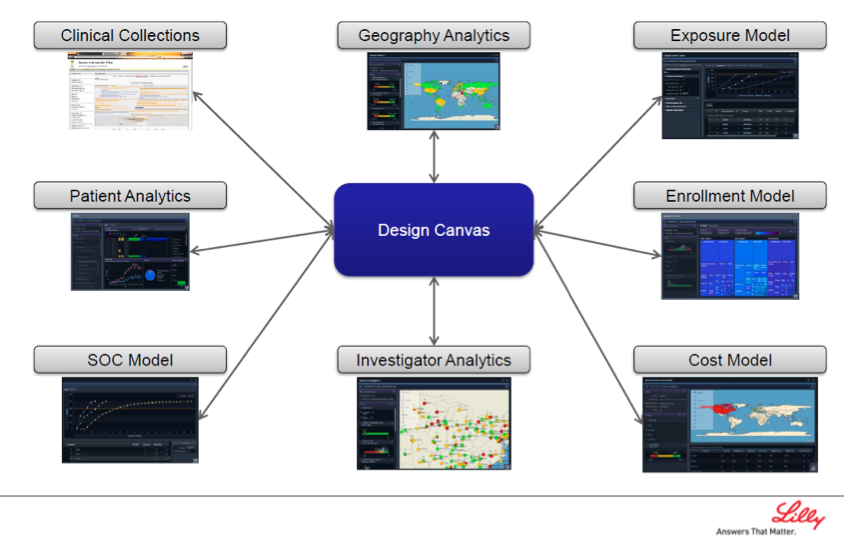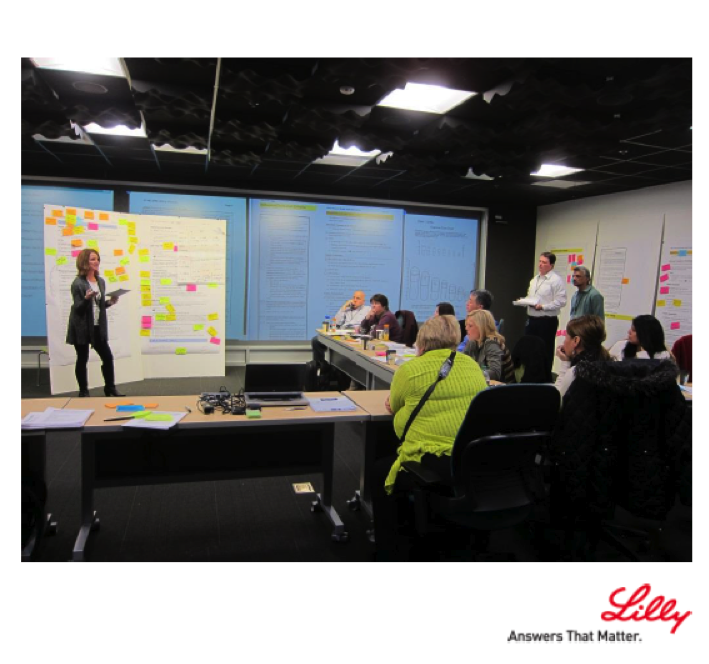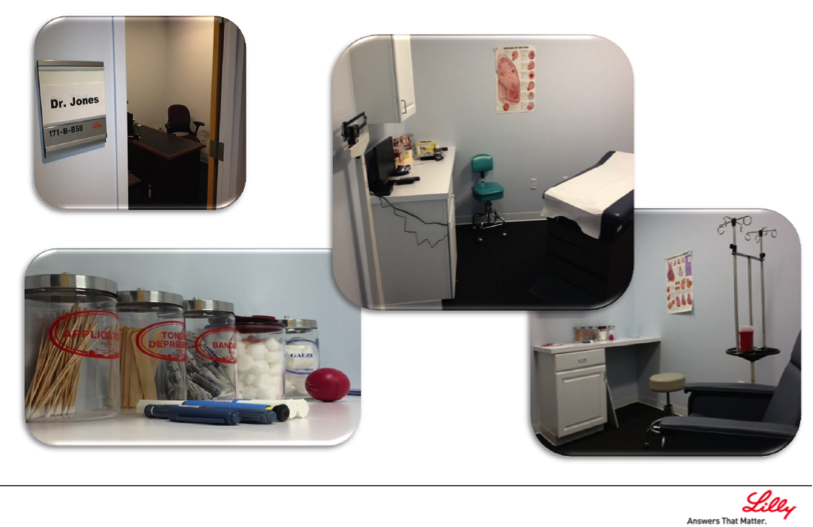Eli Lilly Unveils Innovative Study Design Platform
Thomas Krohn, Director of Clinical Open Innovation at Eli Lilly, showcased a breakthrough study design platform and process that study teams are currently utilizing.
While at eyeforpharma’s 2014 Patient Centered Clinical Trials, Thomas Krohn, Director of Clinical Open Innovation at Eli Lilly, showcased a breakthrough study design platform and process that study teams are currently utilizing. The system and process is not only improving the quality and efficiency of study design, but is also enabling Lilly to execute patient-centric protocols.
Interactive Jam Sessions with Internal Stakeholders: User Centered Design
Krohn presented Lilly’s innovative study design platform, which digitizes the entire study design process. Figure 1 illustrates how the integration of digitizing protocol design allows study teams to better understand a clinical trial’s strategy by displaying study design data on one platform. “It (the system and process) allows you to do scenario analysis… from the patient, cost, time, and all kinds of dimensions,” said Krohn.
Figure 1: Lilly’s Integrated Study Design Canvas

Once the data is categorized, Lilly initiates ‘Interactive Jam Sessions’ through virtual collaboration. Figure 2 illustrates a typical Interactive Jam Session; internal stakeholders from different groups (i.e., project management, drug safety, data monitoring committee, etc.) convene in a virtual room, where Lilly facilitators assist internal stakeholders with strategizing and organizing their thoughts on designing robust studies. “Jazz musicians are really good musicians. When they get together, they’re not worried about the fundamentals, they jam,” said Krohn. “We bring in very serious talent; how do we enable them to jam? One aspect is that is we actually make it easy for them… it’s not about the digital design, it’s about enabling people to have a different type of conversation,” added Krohn.
Figure 2: Lilly’s Interactive Jam Sessions

External Stakeholder Qualitative Research: Patient and Site Interactions
Krohn then spoke about the importance of involving external stakeholders during the design phase of the clinical trial to ensure study execution receivership and success. Lilly created a study design process that engages study sites, investigators and patients; for example, Lilly connects with study sites and investigators to understand what’s important to successfully execute clinical trials, such as evaluating a study site’s daily activities. Subsequently, Lilly allows volunteer patients to participate in clinical trial protocol design, and specifically focuses on assessing clinical trial compatibility with patients’ and caregivers’ lifestyles. This step is believed to enhance enrollment and retention outcomes.
Simulation
Once the initial concept of the study is generated, Lilly simulates the study with internal study teams, patients and study sites. For example, a Lilly facilitator engages study teams by asking them questions about clinical trial pain points, such as clinical trial materials tracking and delivery, and screening / baseline visits. With regards to study sites and patients, Lilly creates a study site simulation (Figure 3) and obtains feedback from study sites and patients regarding study visit design.
Figure 3: Simulation of a Study Site

Lilly also engages internal commercial departments to obtain feedback on draft protocols from physicians. “We have a field force, clinical development liaisons (medical liaisons)… we enable them to take these draft designs and engage the community,” indicated Krohn.
Measurement
The success determination of any innovative system requires measurement, and Lilly has established this system’s measurement metrics on three facets: customer satisfaction, quality, and trial execution. From the customer satisfaction mindset, Lilly measures study site and patient satisfaction, the number of issues caught prior to a protocol’s approval by study teams, and training scores. From a quality standpoint, Lilly measures the number of CRF queries, non-safety-related protocol amendments, and the number of protocol deviations. From a trial execution perspective, measurement includes startup and enrollment timelines.
Getting in Early and Persuasion are Key
As many of us have experienced, clinical study teams exhibit a level of risk averse behavior and an unwillingness to accept drastic changes, especially when teams are required to undergo the type of change that Lilly is executing. Krohn indicated that study teams need to be engaged early, and that they need to be offered a ‘white glove service’ in order to take the burden off of study teams. Moreover, Krohn mentioned that there are performance mandates that now require study teams to build protocols using this innovative digital approach. “It is a cultural shift… you have to be willing to be engaging in diverse ideas,” said Krohn.